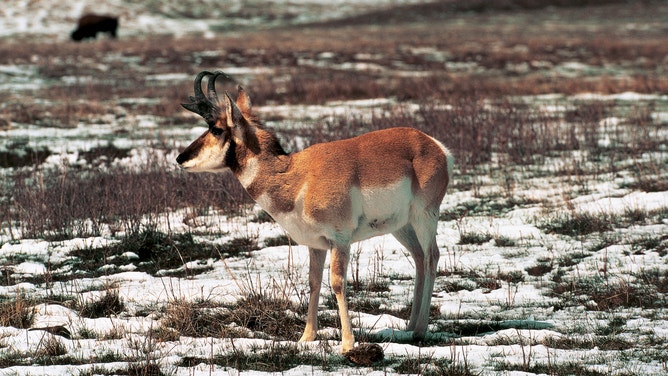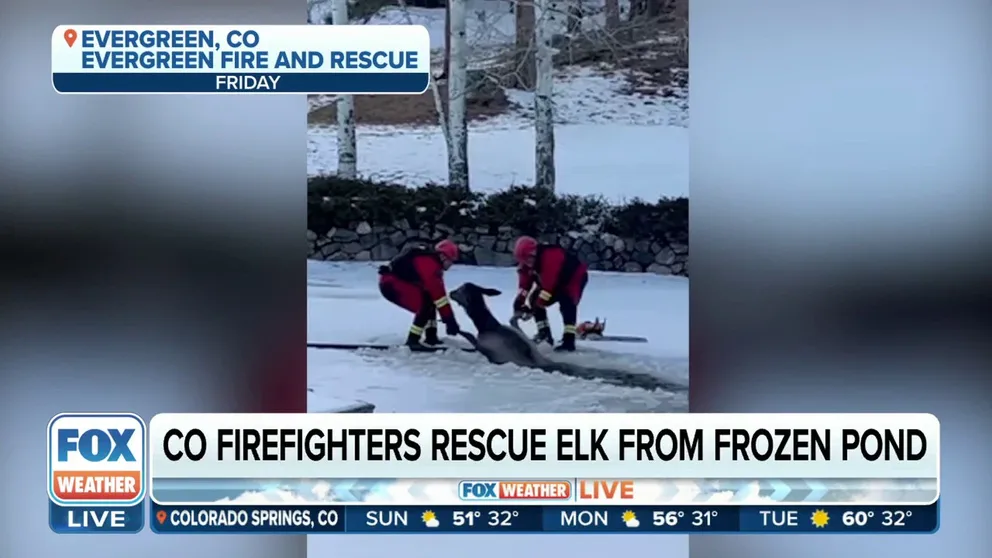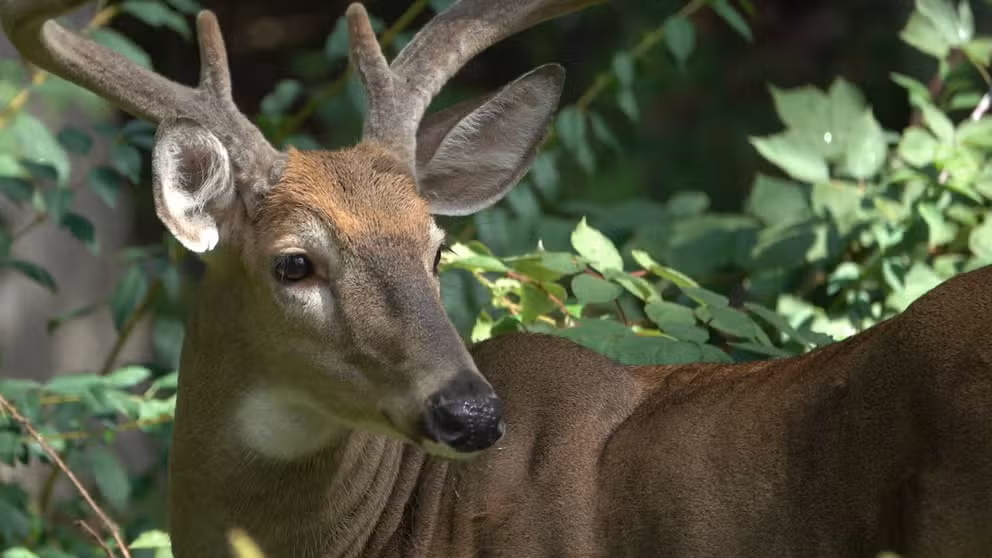Hunting permits could be slashed after severe winter plagues western wildlife
The tough winter has thinned herd numbers of elk, deer and antelope through the Rockies and the Great Basin. Officials want to cut down on hunting licenses to give the starved animals that are left a chance to regenerate.
Watch: Firefighters pull elk from frozen pond
Two Evergreen, Colorado Fire and Rescue officers came to the rescue of an unlikely victim that fell through the ice on a local pond. They pulled the struggling elk from the frigid waters.
After a long and snowy winter, Colorado elk and deer can’t get to food through the hard-packed snow. Officials say that migrating in the feet of snow is arduous, and many animals are forced to migrate further west but starve on the way. And with the starving wildlife, Colorado might be forced to limit hunting permits.
"It’s tough," said Mike Swaro with the Colorado Parks and Wildlife. "There’s no other way to describe it. We typically see some mortality from starvation every winter. That’s just nature; not every animal survives. This year it feels like all we’re seeing is starving or dying animals."
The difficult travel and added miles cause the animals to burn more fat and calories that they may be unable to replenish in time.
FIREFIGHTERS STRUGGLE TO PULL ELK OUT OF FROZEN POND

Deep hard pack snow makes for tough migration and foraging.
(Colorado Department of Parks and Wildlife / FOX Weather)
A district wildlife manager said he gets calls constantly for sick animals who can’t get up along roadways and in yards. He often has to make the tough call to "end an animal’s life just to end its suffering."
Sometimes windswept roadway shoulders are the only areas with grass peeking through. Plowed roadways also offer easier travel to the game. And, animals sometimes bed down on the warm asphalt instead of the safer snowy fields. So animal versus vehicle crashes are on the rise.
A CHANGE TO PERMANENT DAYLIGHT SAVING TIME WOULD REDUCE DEER COLLISION, STUDY SAYS
The severe winter conditions also contributed to high elk calf mortality and above-average cow deaths, according to the CPW.
Hunting licenses could be restricted due to the starving wildlife
Hunting season and its role in conservation
At the turn of the 20th century, the deer population in the United States hit dangerously low levels. Wildlife organizations were able to help the population rebound in large part thanks to an unlikely tool: hunting seasons.
The tough winter has thinned herd numbers of elk, deer and antelope through the Rockies and the Great Basin. Officials want to cut down on hunting licenses to give the starved animals that are left a chance to regenerate.
Even before this rough winter, biologists warn that deer's male/female ratio has fallen below the ‘Deer Herd Management Plan’ levels, meaning the population could decline naturally.
Also, chronic deer wasting disease has hit herds along with a rare pronghorn disease recently.

Wyoming Game and Fish is estimating that approximately 200 pronghorn have died of the rare disease since mid-February in just Wyoming.
(Wyoming Game and Fish Department / FOX Weather)
As a result, the agency recommended significantly reducing the number hunting licenses for elk, deer and pronghorn in certain areas for the 2023 big game season. In most areas, officials recommend a 40% cut.
"This has been a tough year for licenses setting in the Craig area," said CPW Area Wildlife Manager Bill de Vergie in a news release. "We know this impacts more than just CPW. These decisions also have impacts on hunters and the local economy, that’s what makes these decisions the hardest. My hope is they understand this isn’t something we wanted to do; it’s something we had to do."
The pronghorn already have the longest land migration in the continental U.S., sometimes 150 miles each way, according to the National Wildlife Foundation. They are also North America's fastest land animal, with speeds closing in on 60 mph.
HOW DEER AND ELK SURVIVE HARSH, SNOWY WINTERS

A pronghorn antelope.
(DeAgostini / Getty Images)
The pronghorn migrate between feeding grounds to survive the winter.
Biologists hope the thick snowpack, 143% of average, will recharge the natural springs and lead to plentiful grasses in the next few months. CPW says this is the most promising year in the past 10 years of drought.
The scientists tag the animals to track migration along with aerial surveys and are anxious to see if the winter-emaciated animals will be able to migrate, considering their low-fat stores.
WHY DEER HUNTING SEASON HAPPENS IN THE FALL
"I wish we could see into the future," CPW Area Terrestrial Biologist Darby Finley said in a news release. "Unfortunately, we don’t know what Mother Nature has in store for the next couple months. However, we are fortunate to have radio collars out on deer in the White River herd and elk in the Bear’s Ears herd and will be able to quantify survival in these herds. Pronghorn herds will be more difficult to assess until the snow melts."
Hunters must wait until May to see if their licenses are reduced. That’s when the Colorado Parks and Wildlife Commission will vote and finalize license numbers.

